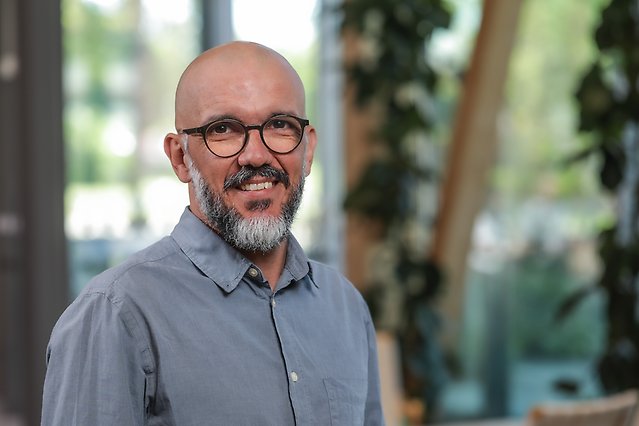"More than weather!"
Everyone is affected by the weather. It is also weather that many people think of when they hear the word ‘meteorology’. However, SMHI's meteorological research is broader than that. It has the capacity to develop knowledge, models and analyses in the fields of weather forecasting, climate analysis, the air environment and processes in the atmosphere. It also develops modern methods for using radar and satellite data in new ways.
"The field of meteorology is huge! It's more than weather – we work on weather forecast modelling and also in air quality, with radar and satellites. What we have in common is that we develop new knowledge, tools and new methods and advance the research front," says Jorge Amorim, head of SMHI's meteorological research.

Jorge Amorim, head of SMHI's meteorological research unit, is driven by the desire to contribute to a better society through his scientific work.
The around 40 employees at the meteorological research unit are trained in fields such as meteorology, theoretical physics, mathematics, environment and computer science. They work with observational data, meteorological analyses and the development of models for regional weather forecasts in the Nordic region, as well as with remote sensing, climate analysis and air quality on an urban to global scale. The accumulated knowledge contributes to increasing the use of remote sensing data, i.e. data from radar and satellite, both in model development and in meteorological and climatological analyses.
Common denominator for many societal challenges
"There are many major challenges in society in terms of climate, urbanisation, extreme weather and air pollution, and we have a common ground in meteorology. We often work with sensitive subjects. We know that bad air leads to increased mortality. So do heat-related issues. Extreme weather has a huge impact on society!"
"We need to build resilience – a resilient society that can cope with a variety of stresses. We can contribute to this by providing knowledge, doing a lot of data analysis and communicating our findings."
International co-operation steps up a gear
The models developed at the unit are central to the work and the knowledge produced – whether in the form of a tool that can be used for on-going forecasting or a knowledge base presented in a report. The work is being stepped up through international projects and collaborations and in the consortia formed around the largest modelling systems.
"Sharing development efforts between several parties is a prerequisite for effectively offering society powerful tools. We are responsible for certain components or subsystems, and in return we benefit from everyone's development."
International work also takes place in bilateral projects, i.e. projects between two countries in mutual co-operation.
"My first project at SMHI was a bilateral collaboration with Brazil on the air environment, where we built a strong bridge between the countries through research. Of course, the fact that I speak Portuguese facilitated the collaboration!"
"Finding a good balance between research and modelling, publishing scientifically and at the same time communicating with the population and different expert groups in society. This is how we create real societal benefits that make a difference," concludes Jorge Amorim.

